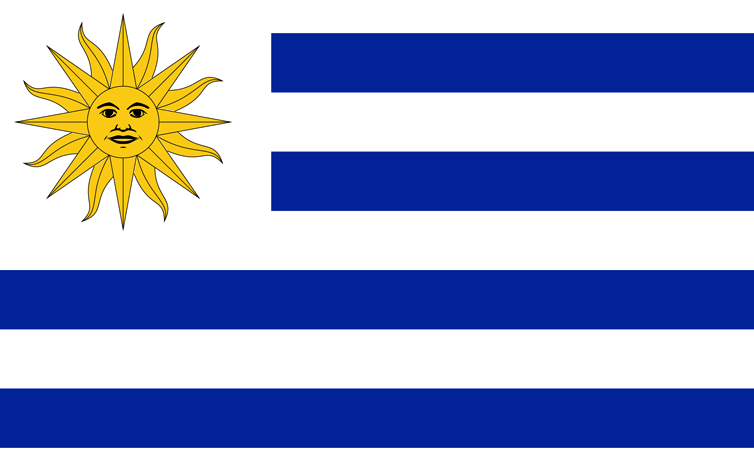VENTUS PARTICIPÓ EN ENCUENTRO SOBRE CAMBIO CLIMÁTICO, EL ACUERDO DE PARÍS Y LA GENERACIÓN EÓLICA
- 1 de mayo de 2016
[tp lang=»es» not_in=»en»]
 El pasado 29 de abril , Ventus estuvo presente en el evento » Mecanismos y Redes de Transferencia de Tecnologías relacionadas con el Cambio Climático en América Latina y el Caribe» organizado por el BID, Fundación Bariloche, OLADE y PNUMA.
El pasado 29 de abril , Ventus estuvo presente en el evento » Mecanismos y Redes de Transferencia de Tecnologías relacionadas con el Cambio Climático en América Latina y el Caribe» organizado por el BID, Fundación Bariloche, OLADE y PNUMA.
Una de las ponencias del día, en el panel sobre “Cambio climático, energía y tecnología, desafíos y oportunidades bajo el Acuerdo de París. Visiones del sector privado y financiero” estuvo a cargo del ingeniero industrial Óscar Ferreño. El encargado de Nuevos Negocios en América Latina para Ventus expuso sobre las oportunidades existentes en Latinoamérica según el Acuerdo de París con el objetivo de derribar las barreras existentes en el mercado eólico y las oportunidades únicas que se presentan en la región.
Según destacó Ferreño, «Uruguay es un ejemplo en América en relación a todos los avances que han habido en los últimos años en el ámbito de la generación eólica».
Asimismo, enfatizó la » importancia de combatir determinados mitos sobre la generación eólica”.
De acuerdo a Ferreño, en la experiencia de Uruguay se pudo observar la caída de algunos mitos:
1) Que son costosas, hay un gran capex y un bajo o casi nulo opex, lo que hace que siempre se pueda encontrar una financiación que las rentabilice, con la financiación obtenible en Uruguay son competitivas con un gas a 6 U$S/:BTU o barril de petróleo a 40 U$S. Esto también mejorará con el reconocimiento del aumento de la vida útil de los aerogeneradores.
2) Que la energía producida es de mala calidad y solo puede introducirse en forma parcial. Esto desapareció con el advenimiento de la regulación de potencia por paso y velocidad variable.
3) Que las variaciones de potencia horaria son muy bruscas y la hacen ingobernable. Esto sería cierto si los parques estuviesen concentrados en una región, pero si se distribuyen en algunos centenares de km esto desaparece.
4) Que siempre precisan gran cantidad de respaldo firme. Las renovables y la eólica en particular combinadas con las hidroeléctricas disminuyen drásticamente las necesidades de térmica. La eólica desplaza a la hidráulica cuando el viento sopla y prolonga la duración de los embalses, la hidráulica cubre a la eólica cuando el viento cesa. Esto es cierto aún en el caso de embalses de pocos días de almacenamiento.
[/tp]
[tp lang=»en» not_in=»es»]
 On April 29, Ventus attended the “Climate Technology Transfer Mechanisms and Networks in LAC” event held by IDB, Fundación Bariloche, OLADE and PNUMA.
On April 29, Ventus attended the “Climate Technology Transfer Mechanisms and Networks in LAC” event held by IDB, Fundación Bariloche, OLADE and PNUMA.
One of the speakers was Mr. Oscar Ferreño, Ventus Advisor on New Business Opportunities in Latin America, who spoke in the panel on “Climate Change, Energy and Technology, Challenges and Opportunities under the Paris Agreement. Views of the private and financial sectors”. He talked about the existing opportunities in Latin America pursuant to the Paris Agreement aiming at eliminating the barriers in the wind power market and the unique opportunities in the region.
Mr. Ferreño highlighted that “Uruguay is an example of the progress made in the latest years as regards wind power generation in the Americas”. Moreover, he emphasized the “importance of tearing down the myths on wind power generation.”
According to Mr. Ferreño, the Uruguayan experience proved some myths untrue:
1) That it is expensive: There is a large capex and a low or almost null opex, which leads to always finding some financing to make it profitable. Due to the financing attainable in Uruguay, it is competitive against gas at 6 U$S/BTU or the oil price at 40 U$S.
2) That the power produced is low quality and can only be partially introduced: This disappeared with the implementation of power regulation by variable pitch and rotor speed.
3) That the hourly power variations are very abrupt, making it unmanageable: This would be true if all the farms were concentrated in only one region but if they are distributed in hundreds of kilometers, this is not the case.
4) That it always needs firm power guarantees: Renewable power, wind power in particular, combined with hydroelectric power drastically decrease the need of resorting to thermal power. Wind power takes over hydraulic power when the wind blows and prolongs the duration of dams, while hydraulic power substitutes wind power when the wind weakens. This is true even in the case of few-day-storage dams.
[/tp]















